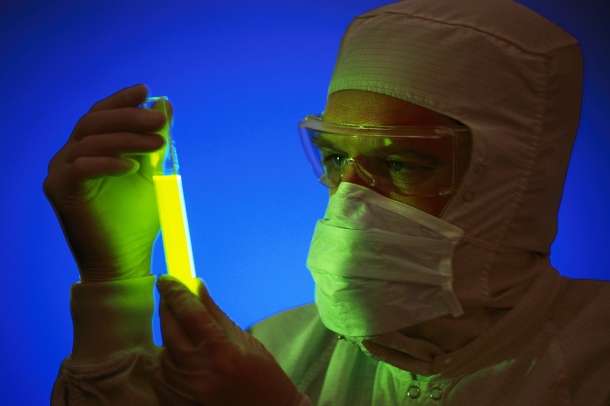Monsanto Company is an American multinational agricultural biotechnology corporation. It is a leading producer of genetically engineered seeds and of the herbicide glyphosate, a chemical substance used to destroy or inhibit the growth of plants, which it markets under the Roundup brand.
The information provided in this article is not generally known by the public. People are far more concerned with Monsanto’s recent business practices but it is also important to understand its equally dark past. The aim of this article is to illustrate that Monsanto is in no way new to controversy and in fact seems to have deliberately chosen to develop and produce products which cause irreparable damage to the environment and life; be human or animal.
The people's perception of Monsanto
Since the company’s foundation in 1901 it has been controversial. Today the world associates Monsanto with biotechnology but over the years it has produced artificial sweeteners, insecticides, polychlorinated biphenyls (PCBs), pesticides and bovine somatotropin (rBST).
This article attempts to provide straight forward information on Monsanto’s controversial past.
The company's first product was the artificial sweetener saccharin, which it sold to the Coca-Cola Company. Saccharin has effectively no food energy and is devoid of any food value. Studies on laboratory rats during the early 1970’s linked saccharin with the development of bladder cancer in rodents and as a consequence, all food containing saccharin was labeled with a warning.
However, in 2000, the warning labels were removed because scientists learned that rodents, unlike humans, have a unique combination of high pH, high calcium phosphate and high protein levels in their urine which caused saccharin to damage their bladders. Doctors still caution pregnant women against excessive consumption of products containing artificial sweeteners since such foods could be replacing nutrient-dense, energy-yielding foods. Without the labels the advice is difficult to follow.
Monsanto began manufacturing the insecticide DDT, a chemical used against insects, in 1944. DDT was used in the second half of World War II by the U.S. to control malaria and typhus among civilians and troops. After the war, DDT was made available for use as an agricultural insecticide, and its production and use greatly increased.
In 1962, the book ‘Silent Spring’ by American biologist Rachel Carson was published. The book catalogued the environmental impacts of spraying DDT and questioned the logic of releasing large amounts of chemicals into the environment without fully understanding their effects on ecology or human health. Due to the book’s success and resulting public outcry DTT was banned in the U.S. in 1972. DDT was subsequently banned for agricultural use worldwide under the Stockholm Convention in 2004.
DDT in use 1948
DDT has been linked to diabetes, asthma, early pregnancy loss, premature birth and low birth weight. One study suggests that children exposed while in the womb have a greater chance of development problems. Occupational exposure in agriculture and malaria control has also been linked to neurological problems such as Parkinson’s disease.
In 1935 the company acquired Swann Chemical Company; a PCB producer. PCBs were widely used as dielectric and coolant fluids in transformers, capacitors, and electric motors. The toxicity of PCBs had been known since before its first commercial production through research done by producing companies themselves in the 1930’s; however, these conclusions were dismissed as negligible.
Much like DDT, contact with PCBs is known to cause major health problems including liver cancer. Again babies exposed while in the womb are at risk of changing sex or developing into neither male nor female, a condition termed intersex. Before the United States Congress banned domestic production in 1979, Monsanto produced 99% of all PCBs used by U.S. industry.
Monsanto’s most notorious past product must be the herbicide widely known as Agent Orange. During the 1960’s and 1970’s Monsanto was one of the most important producers of Agent Orange for the U.S. Armed Forces during the Vietnam War (1961-1971). Vietnamese authorities estimate 400,000 people were killed or maimed, and 500,000 children born with birth defects as a result of the use of the chemical. The Red Cross of Vietnam estimates that up to 1 million people are disabled or have health problems due to Agent Orange.
United States Air Force records show that at least 6,542 spraying missions took place during the war. Nearly 20,000,000 U.S. gallons (76,000,000 liters) of material containing the chemical herbicide mixed with jet fuel was sprayed in Vietnam, eastern Laos and parts of Cambodia.
In 1994 Monsanto began to produce yet another controversial product; a recombinant bovine somatotropin (rBST) branded Posilac. The administration of rBST increases the milk yield in lactating cows. From 2000 to 2005 the USDA National Agricultural Statistics Service (NASS) survey of dairy producers found that about 17% of producers used rBST.
Milk from rBST-treated cows is not chemically identical to traditional milk; milk from rBST-treated cows contains slightly elevated levels of certain hormones. Cows treated with rBST have a substantially higher rate of mastitis, the inflammation of breast tissue, and more often require antibiotics.
Learning about the past aids us when trying to learn about the present. This is universally true and applies to present Monsanto practices. Can Monsanto change? Looking back at its history raises serious doubts.
Originally posted on The Pianosa Chronicle




